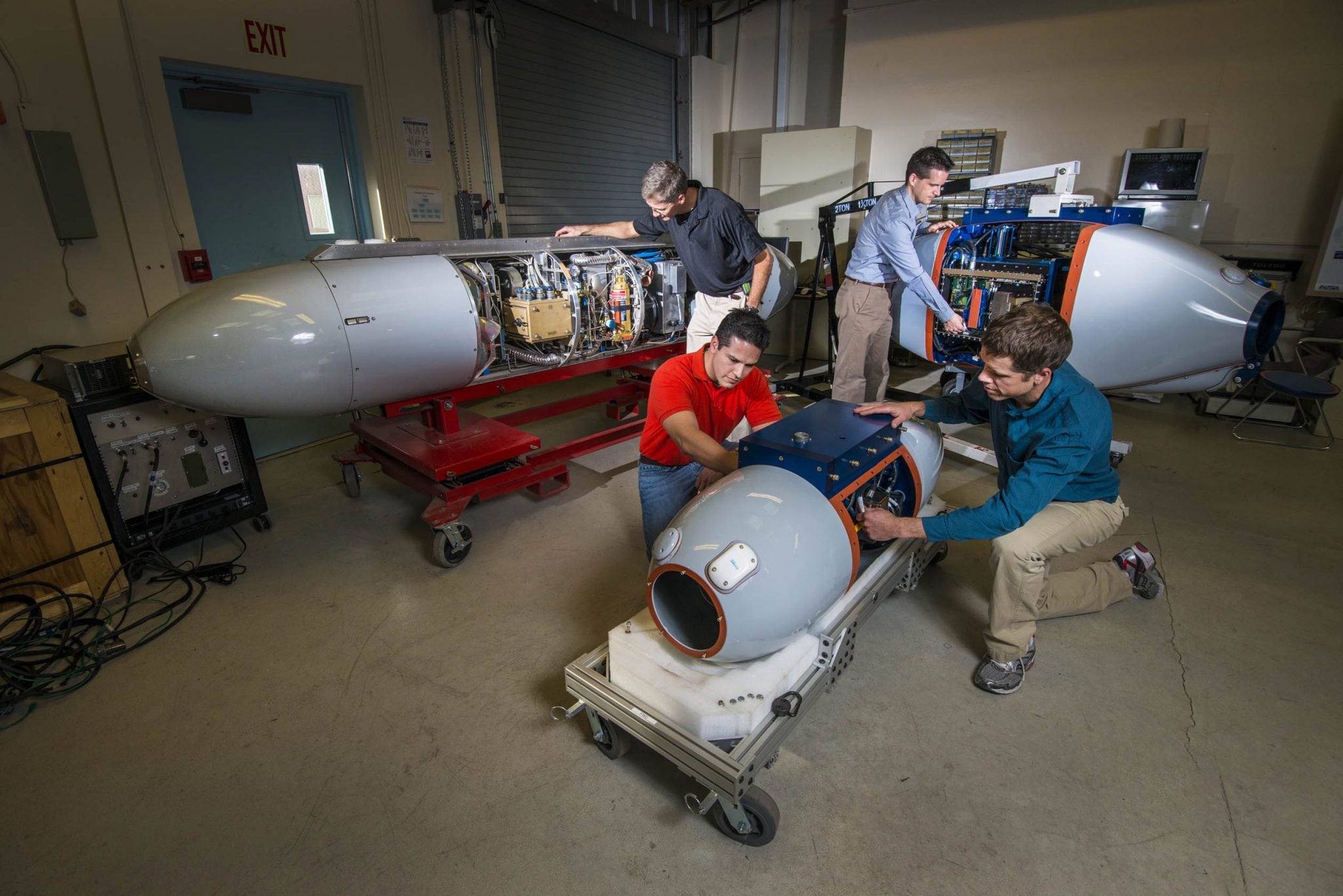The U.S. Air Force is teaming up with engineers from Sandia National Laboratories to test the capabilities of unmanned aircraft systems (UAS) equipped with radiation sensors to collect airborne radioactive particles for analysis.
Harvester is Sandia’s airborne particulate-collection system that demonstrated the ability to fly through radiation over a broad range of altitudes during test flights on an MQ-9 Reaper UAS at Grand Forks Air Force Base in September. The system uses two particulate sampling pods to “taste” the atmosphere, and a third to provide directional guidance, Sandia said.

(Sandia National Laboratories researchers prepare pods, photo by Randy Montoya)
The system has four sodium-iodide radiation detectors and complex processing algorithm to guide the system’s Directional Gamma Radiation Sensor (DGRS) toward the radioactive plume, Sandia said. The ground operator then instructs the ground station pilot to fly towards the plume’s “hot spot.”
“The operator will see a vector that shows peak plume intensity up and to the right, let’s say,” Sanders said. “It’s the equivalent of a guide saying, ‘You’re getting warmer,’” said Sandia Project Leader Joe Sanders.

(A Sandia researcher checks air flow in the pod, photo by Randy Montoya)
Sandia expects its three-pod system along with additional software and ground-control equipment to be deployed on Air Force investigatory aircraft over the next few years. The company said that if a nuclear device were to unexpectedly detonate anywhere on Earth, the Air Force could use the pods on one of its MQ-9 Reapers to track the origins of the device and identify who designed it.

(The radiation sensor–smaller pod–and Harvester sampling pods ready for a UAV test flight at a U.S. air base, photo by Joe Sanders)
“There’s a high likelihood the Air Force will make Harvester operational in 2014 to augment its current manned aircraft collection capability,” said Sanders. “For maximum responsiveness, we continually engaged with the Air Force to address its technological and operational needs throughout the project.”
Follow @AvionicsMag